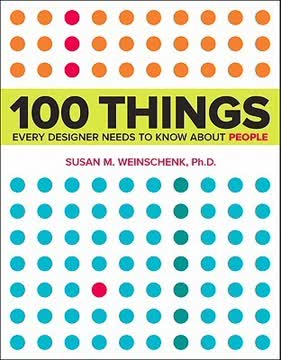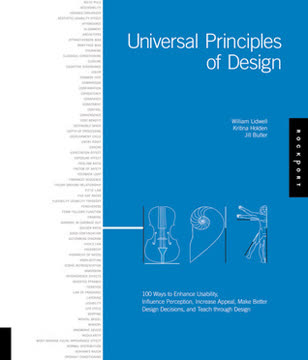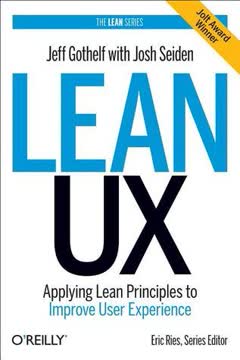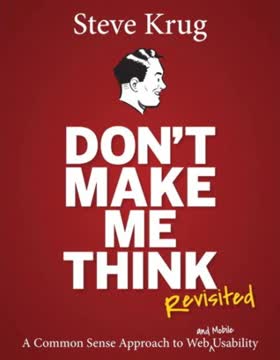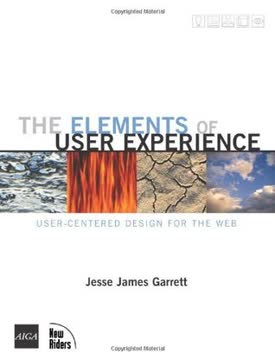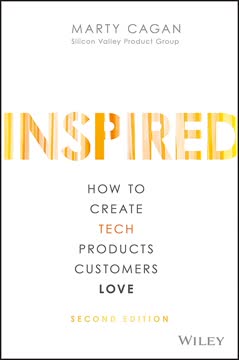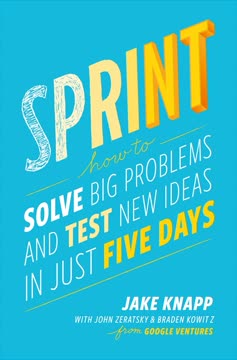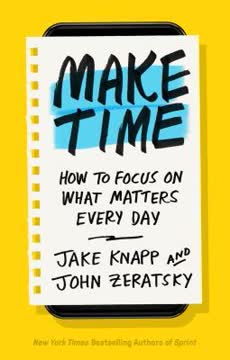Puntos clave
1. Define un objetivo claro a largo plazo e identifica preguntas clave
"¿Por qué estamos llevando a cabo este proyecto? ¿Dónde queremos estar en seis meses, un año o incluso cinco años a partir de ahora?"
Establece metas ambiciosas. Comienza tu sprint definiendo un objetivo claro a largo plazo que refleje los principios y aspiraciones de tu equipo. Este objetivo servirá como un faro para mantener a todos en la misma dirección a lo largo del sprint. No te preocupes por ser demasiado ambicioso; el proceso del sprint te ayudará a encontrar un buen punto de partida y a avanzar realmente hacia incluso el objetivo más grande.
Identifica preguntas clave. Después de establecer el objetivo, elabora una lista de preguntas de sprint que representen las incógnitas y los riesgos potenciales que se interponen entre tu equipo y el objetivo a largo plazo. Estas preguntas guiarán tus soluciones y decisiones a lo largo del sprint, proporcionando una especie de lista de verificación a la que podrás referirte y evaluar después de la prueba del viernes. Ejemplos de preguntas de sprint:
- ¿Podemos explicar nuestro producto a personas que nunca lo han probado?
- ¿Confiarán los clientes en nuestra experiencia?
- ¿Podemos ayudar a un individuo a entender nuestro producto antes de que su equipo se una?
2. Mapea el desafío y elige un objetivo
"Al igual que Gene Kranz y su diagrama del regreso al planeta tierra, tú y tu equipo establecerán lo básico: tu objetivo a largo plazo y las preguntas difíciles que deben ser respondidas."
Crea un mapa visual. Dibuja un diagrama simple que represente el viaje del cliente a través de tu producto o servicio. Este mapa debe incluir:
- Actores clave (clientes, personal, etc.) a la izquierda
- El final (objetivo alcanzado) a la derecha
- De 5 a 15 pasos intermedios que muestren cómo los clientes interactúan con tu producto
Elige un objetivo. Después de crear el mapa, el Decisor (generalmente el CEO o líder del proyecto) debe elegir un cliente objetivo y un evento objetivo en el mapa. Esta decisión se convertirá en el enfoque para el resto del sprint: los bocetos, el prototipo y la prueba fluirán a partir de esta elección.
3. Esboza soluciones competidoras de manera individual
"El brainstorming grupal está roto, pero hay una mejor manera."
Trabaja solo, pero en conjunto. En lugar del tradicional brainstorming grupal, haz que los miembros del equipo trabajen de manera independiente para desarrollar soluciones. Este enfoque permite un pensamiento profundo y genera ideas diversas sin caer en el pensamiento grupal. El proceso de esbozo en cuatro pasos incluye:
- Notas (20 minutos): Revisa la información existente y toma notas.
- Ideas (20 minutos): Anota ideas preliminares y destaca las más prometedoras.
- Crazy 8s (8 minutos): Esboza rápidamente ocho variaciones de tu mejor idea.
- Esbozo de solución (30-90 minutos): Crea un storyboard de tres paneles de tu solución más sólida.
Acepta la imperfección. Recuerda que la habilidad artística no es importante; cualquiera puede esbozar una gran solución utilizando formas simples, figuras de palo y palabras. El enfoque debe estar en comunicar ideas claramente y resolver problemas de manera creativa.
4. Toma decisiones inteligentes sin debates prolongados
"El sprint le da a nuestras startups un superpoder: pueden avanzar rápidamente hacia el futuro para ver su producto terminado y las reacciones de los clientes, antes de hacer compromisos costosos."
Utiliza un proceso de toma de decisiones estructurado. Para evitar debates interminables y tomar decisiones eficientes, sigue el proceso de "Decisión Adhesiva" en cinco pasos:
- Museo de arte: Exhibe los esbozos de soluciones en la pared.
- Mapa de calor: Revisa en silencio y marca las partes interesantes con pegatinas de puntos.
- Crítica rápida: Discute rápidamente los aspectos destacados de cada solución.
- Encuesta rápida: Cada persona vota por su solución favorita.
- Supervoto: El Decisor toma la decisión final.
Confía en el Decisor. Si bien la opinión del equipo es valiosa, la autoridad final en la toma de decisiones debe recaer en el Decisor. Esto asegura una dirección clara y previene la parálisis por análisis. Si hay múltiples ideas fuertes y conflictivas, considera prototiparlas en un "Rumble" para probarlas cara a cara con los clientes.
5. Crea un prototipo realista en solo un día
"Finge."
Adopta la mentalidad del prototipo. Para construir un prototipo realista en solo un día, abraza estos principios:
- Puedes prototipar cualquier cosa
- Los prototipos son desechables
- Construye solo lo suficiente para aprender, pero no más
- El prototipo debe parecer real
Enfócate en la fachada. Crea un prototipo de "calidad Ricitos de Oro" que sea lo suficientemente realista como para evocar reacciones honestas de los clientes, pero no tan pulido que tome demasiado tiempo construir. Utiliza herramientas que permitan un prototipado rápido, como Keynote o PowerPoint para productos digitales, o modifica objetos existentes para productos físicos.
Divide y vencerás. Asigna roles a los miembros del equipo:
- Creadores: Crea componentes individuales
- Conector: Combina componentes sin problemas
- Escritor: Redacta texto y contenido realista
- Recolector de activos: Reúne materiales necesarios
- Entrevistador: Prepárate para las entrevistas con los clientes
6. Prueba con clientes objetivo para obtener valiosos conocimientos
"Cinco es el número mágico."
Realiza cinco entrevistas. Probar con solo cinco clientes objetivo cuidadosamente seleccionados es suficiente para identificar los patrones y conocimientos más importantes. Este enfoque equilibra la eficiencia con el aprendizaje valioso. Estructura cada entrevista utilizando el formato de Entrevista de Cinco Actos:
- Bienvenida amistosa
- Preguntas de contexto
- Presenta el prototipo
- Tareas y sugerencias
- Breve debrief
Observa en conjunto. Haz que todo el equipo del sprint observe las entrevistas juntos, tomando notas en notas adhesivas. Esta observación colaborativa permite un reconocimiento inmediato de patrones y previene la mala interpretación de los resultados. Utiliza una cuadrícula simple para organizar las notas, con columnas para cada cliente y filas para diferentes aspectos del prototipo.
7. Aprende y planifica los próximos pasos basándote en la retroalimentación del cliente
"Un ganador cada vez."
Identifica patrones. Después de las entrevistas, revisa las notas recopiladas como equipo. Busca patrones que surjan entre múltiples clientes, prestando especial atención a las reacciones fuertes (positivas o negativas). Categoriza estos patrones y conocimientos en relación con tus preguntas de sprint y el objetivo a largo plazo.
Determina los próximos pasos. Basándote en los patrones y conocimientos recopilados, decide tu próximo curso de acción. Los posibles resultados incluyen:
- Fracaso eficiente: Descubrir que una solución no funciona, ahorrando tiempo y recursos
- Éxito defectuoso: Identificar una dirección prometedora que necesita refinamiento
- Ganador claro: Confirmar una solución exitosa lista para su implementación
Recuerda que cada resultado del sprint proporciona un aprendizaje valioso, ya sea validando ideas, descubriendo problemas ocultos o revelando nuevas oportunidades. Utiliza esta información para guiar tus esfuerzos futuros y mejorar tu producto o servicio.
Última actualización:
FAQ
What's "Sprint: How to Solve Big Problems and Test New Ideas in Just Five Days" about?
- Overview: "Sprint" by Jake Knapp, John Zeratsky, and Braden Kowitz is a guide to solving big problems and testing new ideas in just five days. It outlines a structured process developed at Google Ventures.
- Purpose: The book aims to help teams quickly move from idea to prototype, allowing them to test and learn from real-world feedback without extensive time or resource investment.
- Structure: The sprint process is broken down into five days, each with specific tasks and goals, from understanding the problem to testing a prototype with real users.
- Audience: It's designed for teams in startups, large companies, and even educational settings who need a fast, efficient way to innovate and make decisions.
Why should I read "Sprint"?
- Efficiency: The book offers a proven method to accelerate decision-making and innovation, which is valuable for anyone facing tight deadlines or resource constraints.
- Practicality: It provides a step-by-step guide that can be applied to a wide range of challenges, making it a versatile tool for problem-solving.
- Real-world Examples: The authors share numerous case studies from their experiences at Google Ventures, illustrating the effectiveness of the sprint process.
- Team Collaboration: It emphasizes the importance of diverse team input and structured collaboration, which can improve team dynamics and outcomes.
What are the key takeaways of "Sprint"?
- Structured Process: The sprint is a five-day process that includes understanding the problem, sketching solutions, deciding on the best ideas, prototyping, and testing with users.
- Focus on Prototyping: The book stresses the importance of creating a realistic prototype quickly to gather user feedback and make informed decisions.
- Team Dynamics: It highlights the value of having a diverse team and a clear decision-maker to guide the process and ensure progress.
- Learning from Users: Testing with real users is crucial to validate ideas and uncover insights that can guide future development.
How does the sprint process work in "Sprint"?
- Day 1 - Understand: The team sets a long-term goal, maps the problem, and gathers insights from experts to identify key questions.
- Day 2 - Sketch: Team members work individually to sketch solutions, drawing on existing ideas and inspiration.
- Day 3 - Decide: The team reviews sketches, votes on the best ideas, and creates a storyboard for the prototype.
- Day 4 - Prototype: A realistic prototype is built quickly, focusing on creating a façade that appears real to users.
- Day 5 - Test: The prototype is tested with real users, and the team observes and learns from their reactions to inform next steps.
What is the "prototype mindset" in "Sprint"?
- Disposable Prototypes: Prototypes should be built quickly and be disposable, focusing on learning rather than perfection.
- Realistic Appearance: The prototype must appear real to users to elicit genuine reactions and feedback.
- Focus on Learning: The goal is to learn as much as possible from user interactions, not to create a finished product.
- Optimism and Resourcefulness: Teams should believe they can prototype anything and be resourceful in finding ways to simulate the final product.
How do you decide on the best ideas in "Sprint"?
- Heat Map Voting: Team members silently review sketches and use dot stickers to vote on the most promising parts of each idea.
- Speed Critique: The team discusses the highlights of each sketch, focusing on areas with the most votes.
- Straw Poll: Each team member votes for their favorite idea, providing input for the final decision.
- Supervote: The Decider makes the final call, using their judgment and the team's input to choose the ideas to prototype.
What role do team dynamics play in "Sprint"?
- Diverse Team: A mix of skills and perspectives is crucial for generating a wide range of ideas and solutions.
- Decider's Role: The Decider is responsible for making final decisions, ensuring the team stays focused and aligned.
- Facilitator's Role: The Facilitator manages the process, keeps the team on track, and ensures productive discussions.
- Collaboration and Independence: While collaboration is key, the process also emphasizes individual work to avoid groupthink and encourage diverse solutions.
How do you test prototypes with users in "Sprint"?
- Five-Act Interview: The interview is structured into five acts: a friendly welcome, context questions, prototype introduction, tasks and nudges, and a quick debrief.
- Think Aloud: Users are encouraged to think aloud as they interact with the prototype, providing insights into their thoughts and reactions.
- Observe Patterns: The team watches the interviews together, taking notes and looking for patterns in user feedback.
- Iterate Based on Feedback: The insights gathered from user testing inform the next steps, whether it's refining the prototype or pivoting to a new idea.
What are some real-world examples from "Sprint"?
- Slack: The book details how Slack used the sprint process to refine their product explanation for non-tech customers, leading to significant improvements.
- Blue Bottle Coffee: The team used a sprint to develop an online store that effectively conveyed their brand's quality and expertise.
- Savioke: The sprint helped Savioke develop a friendly robot personality that enhanced guest experiences in hotels.
- FitStar: The process was used to clarify the value proposition of a fitness app, leading to better user understanding and engagement.
What are the best quotes from "Sprint" and what do they mean?
- "Start at the end." This quote emphasizes the importance of defining a clear long-term goal and working backward to identify the steps needed to achieve it.
- "You can prototype anything." It highlights the book's core belief that with the right mindset and tools, any idea can be quickly turned into a testable prototype.
- "Work alone together." This phrase captures the balance between individual creativity and team collaboration, which is central to the sprint process.
- "The prototype must appear real." It underscores the necessity of creating a realistic façade to gather genuine user feedback.
How can "Sprint" be applied in different contexts?
- Startups: The sprint process is ideal for startups needing to quickly validate ideas and make informed decisions with limited resources.
- Large Companies: It can help large organizations innovate and solve complex problems by fostering a focused, collaborative environment.
- Education: Educators can use sprints to teach problem-solving and design thinking, as demonstrated by examples from universities and high schools.
- Nonprofits and Government: The process can be adapted to address challenges in these sectors, helping teams develop and test solutions efficiently.
What are some common challenges when implementing "Sprint"?
- Time Commitment: Clearing five full days for a sprint can be challenging, especially in larger organizations with busy schedules.
- Decider's Involvement: Ensuring the Decider is present and engaged throughout the sprint is crucial for making effective decisions.
- Prototyping Skills: Teams may need to learn new tools and techniques to create realistic prototypes quickly.
- User Recruitment: Finding and scheduling the right users for testing can be time-consuming but is essential for meaningful feedback.
Reseñas
Sprint recibe en su mayoría críticas positivas por su enfoque práctico hacia la creación rápida de prototipos y la resolución de problemas. Los lectores aprecian las instrucciones claras y detalladas, así como los ejemplos del mundo real. Muchos consideran que las técnicas del libro son útiles para diversas industrias y tamaños de equipo. Sin embargo, algunos critican la falta de originalidad, señalando similitudes con metodologías ya existentes. Otros opinan que el contenido podría haberse resumido. En general, los reseñadores valoran las ideas prácticas del libro y su potencial para acelerar la innovación, aunque algunos cuestionan su aplicabilidad más amplia o la profundidad del análisis.
Similar Books

